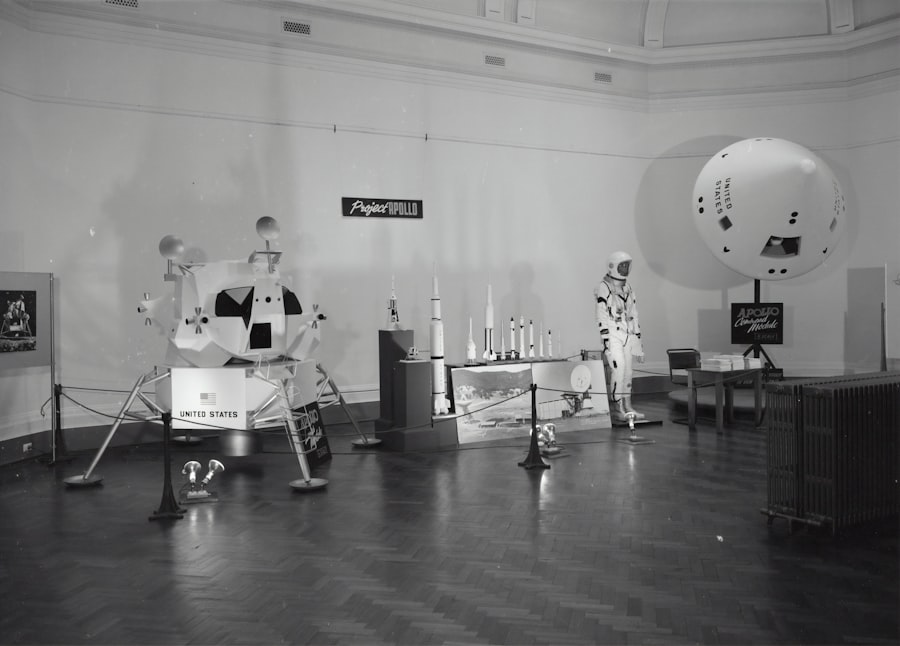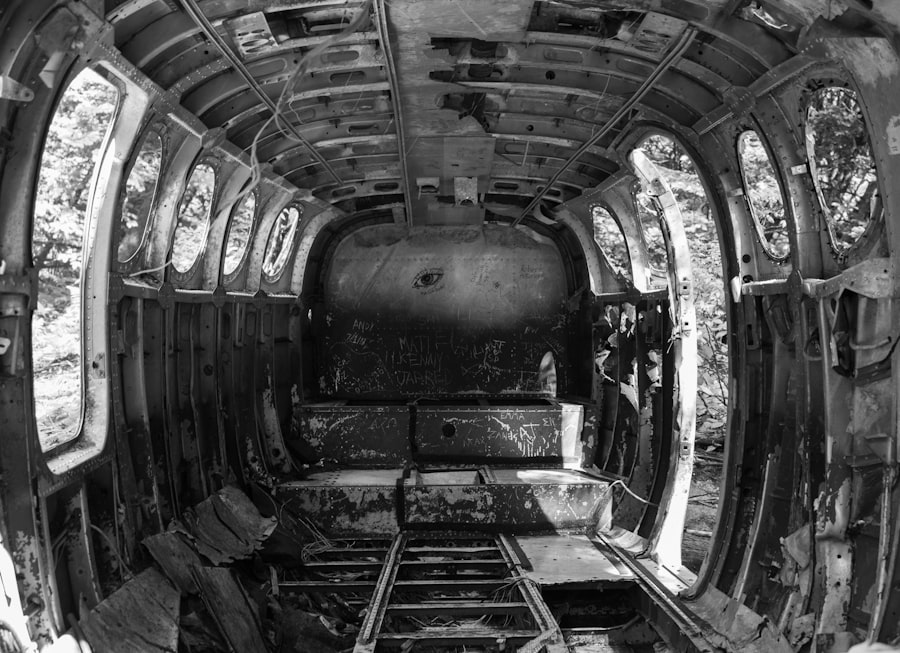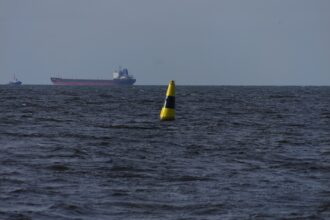The quest for nuclear capability during the mid-20th century was not merely a scientific endeavor; it was a race that would redefine global power dynamics. The Soviet Union, emerging from the shadows of World War II, recognized the strategic importance of developing an atomic bomb. This ambition was fueled by a desire to match the United States, which had successfully detonated its first atomic bomb in 1945.
The Soviets understood that possessing nuclear weapons would not only enhance their military might but also solidify their position as a superpower on the world stage. Thus began a clandestine project that would involve extensive research, significant resources, and a network of brilliant minds dedicated to achieving this monumental goal. The Soviet atomic bomb project, known as the “First Lightning,” was shrouded in secrecy.
The government allocated vast resources to ensure its success, establishing research facilities and recruiting top scientists. The urgency of the project was underscored by the geopolitical climate of the time, as tensions between the East and West escalated. The Soviet leadership was acutely aware that the balance of power hinged on nuclear capabilities, prompting them to accelerate their efforts.
This race against time not only involved scientific innovation but also a complex interplay of political maneuvering and strategic planning, setting the stage for a new era of international relations.
Key Takeaways
- The Soviet Union’s secret atomic bomb project was a race to develop nuclear weapons to match the United States’ capabilities.
- Key players in the Soviet atomic bomb project included scientists and engineers such as Igor Kurchatov and Yuli Khariton, who played crucial roles in its development.
- Espionage and deception played a significant role in the Soviet Union’s acquisition of nuclear secrets, including the infiltration of the Manhattan Project.
- The Manhattan Project, the American effort to develop the atomic bomb, was a point of comparison for the Soviet Union’s own nuclear program.
- The successful test of the first Soviet atomic bomb in 1949 had a profound impact on the Cold War and international relations, sparking an arms race.
The Key Players: Scientists and Engineers Behind the Soviet Atomic Bomb Project
At the heart of the Soviet atomic bomb project were a cadre of scientists and engineers whose expertise and dedication were instrumental in its success. Among them was Igor Tamm, a prominent physicist who played a crucial role in developing the theoretical foundations of nuclear fission. Tamm’s work, alongside that of his colleagues, laid the groundwork for understanding how to harness atomic energy for weaponry.
Another key figure was Andrei Sakharov, who would later become a prominent dissident and advocate for human rights. His contributions to the project were significant, particularly in the development of thermonuclear weapons. The collaboration among these scientists was marked by both camaraderie and competition.
They operated under immense pressure, driven by the urgency of their mission and the looming threat posed by the United States. The Soviet government provided substantial funding and resources, but it also imposed strict oversight, creating an environment where innovation thrived amid intense scrutiny. This unique blend of support and control fostered an atmosphere of creativity, allowing these brilliant minds to push the boundaries of scientific knowledge while navigating the complexities of political expectations.
Espionage and Deception: How the Soviet Union Obtained Nuclear Secrets

The Soviet Union’s pursuit of nuclear capability was not solely reliant on its domestic efforts; it also involved a sophisticated network of espionage that sought to acquire secrets from its rivals. The intelligence community played a pivotal role in this endeavor, infiltrating American scientific circles to gather critical information about the Manhattan Project. Soviet spies, such as Klaus Fuchs and Theodore Hall, provided invaluable insights into nuclear research and development, effectively bridging the gap between what the Soviets knew and what they needed to achieve their goals.
This web of espionage was characterized by deception and subterfuge. The Soviets employed various tactics to recruit spies, including ideological persuasion and financial incentives. The success of these operations not only accelerated their atomic program but also instilled a sense of urgency within American intelligence agencies, prompting them to reevaluate their security measures.
The revelations of Soviet espionage would later fuel paranoia during the Cold War, as both sides grappled with the implications of nuclear proliferation and the potential for catastrophic conflict.
The Manhattan Project: Comparing the Soviet and American Efforts
| Aspect | American Effort | Soviet Effort |
|---|---|---|
| Duration | 1939-1945 | 1942-1949 |
| Cost | 2 billion | Unknown |
| Scientists Involved | Over 130,000 | Unknown |
| Number of Facilities | 30+ | Unknown |
| Number of Tests | 3 | 1 |
The Manhattan Project, initiated by the United States during World War II, represented one of the most ambitious scientific endeavors in history. It brought together some of the brightest minds in physics and engineering to develop an atomic bomb before Nazi Germany could achieve similar capabilities. In contrast, the Soviet Union’s atomic bomb project emerged in response to this American initiative, marking a significant divergence in approach and execution.
While both projects shared common goals, their methodologies differed markedly. The Manhattan Project benefited from vast resources and a high degree of secrecy, allowing for rapid advancements in nuclear technology. In contrast, the Soviet project faced challenges related to resource allocation and bureaucratic oversight.
However, what the Soviets lacked in initial infrastructure, they made up for with determination and ingenuity. The race between these two superpowers not only highlighted their scientific prowess but also underscored the geopolitical stakes involved in nuclear development.
The First Soviet Atomic Bomb Test: Unveiling the Success of the Project
On August 29, 1949, the world witnessed a seismic shift in power dynamics with the successful detonation of the first Soviet atomic bomb at Semipalatinsk in Kazakhstan. Codenamed “First Lightning,” this test marked a watershed moment in history, signaling that the Soviet Union had joined the exclusive club of nuclear-armed nations. The implications were profound; it not only validated years of research and development but also altered the strategic landscape of international relations.
The success of this test sent shockwaves through Washington and beyond. It shattered the perception that the United States held a monopoly on nuclear weapons and ushered in an era characterized by mutual suspicion and fear. The Soviet Union’s entry into the nuclear arena fundamentally changed military strategies on both sides, leading to an arms race that would dominate global politics for decades.
This momentous event underscored the reality that nuclear weapons had become central to national security considerations, forever altering how nations approached diplomacy and conflict.
The Impact of the Soviet Atomic Bomb on the Cold War

The successful development of the Soviet atomic bomb had far-reaching consequences for the Cold War landscape. It intensified existing tensions between the United States and the Soviet Union, as both superpowers sought to assert their dominance through military might. The balance of power shifted dramatically; no longer could one nation claim absolute superiority without fear of retaliation from its rival.
This newfound parity led to an escalation in arms development and military posturing, as each side sought to deter aggression through an ever-expanding arsenal. Moreover, the presence of nuclear weapons fundamentally altered diplomatic relations between nations. The doctrine of mutually assured destruction (MAD) emerged as a guiding principle during this period, shaping military strategies and foreign policy decisions.
Leaders on both sides grappled with the implications of nuclear warfare, leading to a precarious balance where any miscalculation could result in catastrophic consequences. The Cold War became not just a battle for ideological supremacy but also a contest for survival in an increasingly dangerous world.
The Legacy of the Soviet Atomic Bomb Project: Nuclear Proliferation and Arms Race
The legacy of the Soviet atomic bomb project extends far beyond its immediate impact on international relations; it laid the groundwork for ongoing issues related to nuclear proliferation and arms control. As more nations sought to develop their own nuclear capabilities in response to perceived threats or aspirations for power, concerns about global security intensified. The proliferation of nuclear weapons became a pressing issue for policymakers worldwide, prompting calls for disarmament and non-proliferation treaties.
This competition not only strained international relations but also diverted resources away from critical social and economic needs. The legacy of this period continues to resonate today as nations grapple with the challenges posed by rogue states seeking nuclear capabilities and non-state actors attempting to acquire such weapons.
Declassified Documents: Shedding Light on the Soviet Union’s Nuclear Program
In recent years, declassified documents have provided invaluable insights into the inner workings of the Soviet Union’s nuclear program. These documents reveal not only technical details about their research but also shed light on decision-making processes within the government. Historians and scholars have pored over these materials to better understand how scientific advancements were intertwined with political considerations during this tumultuous period.
The release of these documents has allowed for a more nuanced understanding of how fear, ambition, and ideology shaped nuclear policy in the Soviet Union. They illustrate how leaders navigated complex relationships with scientists while grappling with external pressures from rival nations. This newfound knowledge has enriched historical narratives surrounding nuclear development and has prompted discussions about transparency and accountability in state-sponsored scientific endeavors.
Challenges and Setbacks: Obstacles Faced by the Soviet Atomic Bomb Project
Despite its eventual success, the Soviet atomic bomb project encountered numerous challenges and setbacks along its journey.
Additionally, scientists faced significant obstacles related to access to materials necessary for bomb construction, particularly uranium and plutonium.
Moreover, internal conflicts within scientific circles sometimes hindered collaboration and innovation. Rivalries among key figures occasionally led to divergent approaches that complicated decision-making processes. These challenges tested the resolve of those involved in the project but ultimately contributed to a culture of resilience that characterized Soviet scientific endeavors during this period.
Ethical Considerations: The Moral Dilemmas of Nuclear Weapons Development
The development of nuclear weapons raises profound ethical questions that continue to resonate today. As scientists worked tirelessly on projects aimed at creating increasingly destructive capabilities, they grappled with moral dilemmas surrounding their contributions to warfare and human suffering. Many individuals involved in these efforts later expressed regret over their roles in developing weapons capable of mass destruction.
The ethical considerations surrounding nuclear weapons extend beyond individual scientists; they encompass broader societal implications as well. Nations must confront questions about responsibility, accountability, and transparency when it comes to nuclear arsenals. As global tensions persist and new threats emerge, these moral dilemmas remain at the forefront of discussions about security policies and international relations.
Lessons Learned: How the Soviet Atomic Bomb Project Shaped International Relations and Security Policies
The legacy of the Soviet atomic bomb project offers critical lessons for contemporary international relations and security policies. It underscores the importance of diplomacy in mitigating conflicts arising from nuclear proliferation while highlighting how technological advancements can reshape power dynamics among nations. The experiences gained during this period inform current efforts toward arms control agreements aimed at preventing further escalation.
Furthermore, understanding how fear influenced decision-making during this era can guide contemporary leaders as they navigate complex geopolitical landscapes marked by uncertainty and mistrust. As nations continue to grapple with issues related to nuclear weapons development, lessons from history serve as reminders that cooperation is essential for fostering stability in an increasingly interconnected world. In conclusion, while the race for nuclear capability during the Cold War era was fraught with challenges and ethical dilemmas, it ultimately shaped modern international relations in profound ways.
The legacy left behind by projects like those undertaken by both superpowers continues to influence global security policies today as nations strive toward peace amidst ongoing tensions surrounding nuclear proliferation.
The Soviet atomic bomb project was a pivotal moment in history, marking the beginning of a new era in global power dynamics. For those interested in exploring the intricacies of this clandestine operation, a related article can be found on the In The War Room website. This article delves into the espionage, scientific breakthroughs, and geopolitical tensions that surrounded the Soviet Union’s quest to develop nuclear capabilities. To gain a deeper understanding of these historical events, you can read more by visiting the following link: In The War Room.
WATCH THIS 🤯How the KGB Stole America’s Future
FAQs
What was the Soviet atomic bomb project?
The Soviet atomic bomb project was a top-secret research and development program aimed at creating a nuclear weapon during and after World War II. It was initiated in response to the United States’ successful development and use of the atomic bomb.
When did the Soviet atomic bomb project begin?
The Soviet atomic bomb project officially began in 1943, following the discovery of the United States’ Manhattan Project. The project was led by physicist Igor Kurchatov and received significant resources and support from the Soviet government.
What were some of the key secrets of the Soviet atomic bomb project?
Some of the key secrets of the Soviet atomic bomb project included the development of a plutonium-based implosion-type bomb, the construction of secret research facilities and testing sites, and the recruitment of scientists and engineers from around the world to work on the project.
How did the Soviet atomic bomb project impact the Cold War?
The successful development of the Soviet atomic bomb project had a significant impact on the Cold War, as it led to a nuclear arms race between the United States and the Soviet Union. The existence of Soviet nuclear capabilities also influenced international politics and military strategies during the Cold War era.
What were the consequences of the Soviet atomic bomb project secrets being revealed?
The revelation of the Soviet atomic bomb project secrets had far-reaching consequences, including increased tensions between the United States and the Soviet Union, as well as concerns about nuclear proliferation and the potential for nuclear conflict. The disclosure of the project also raised questions about espionage and the security of classified information.




